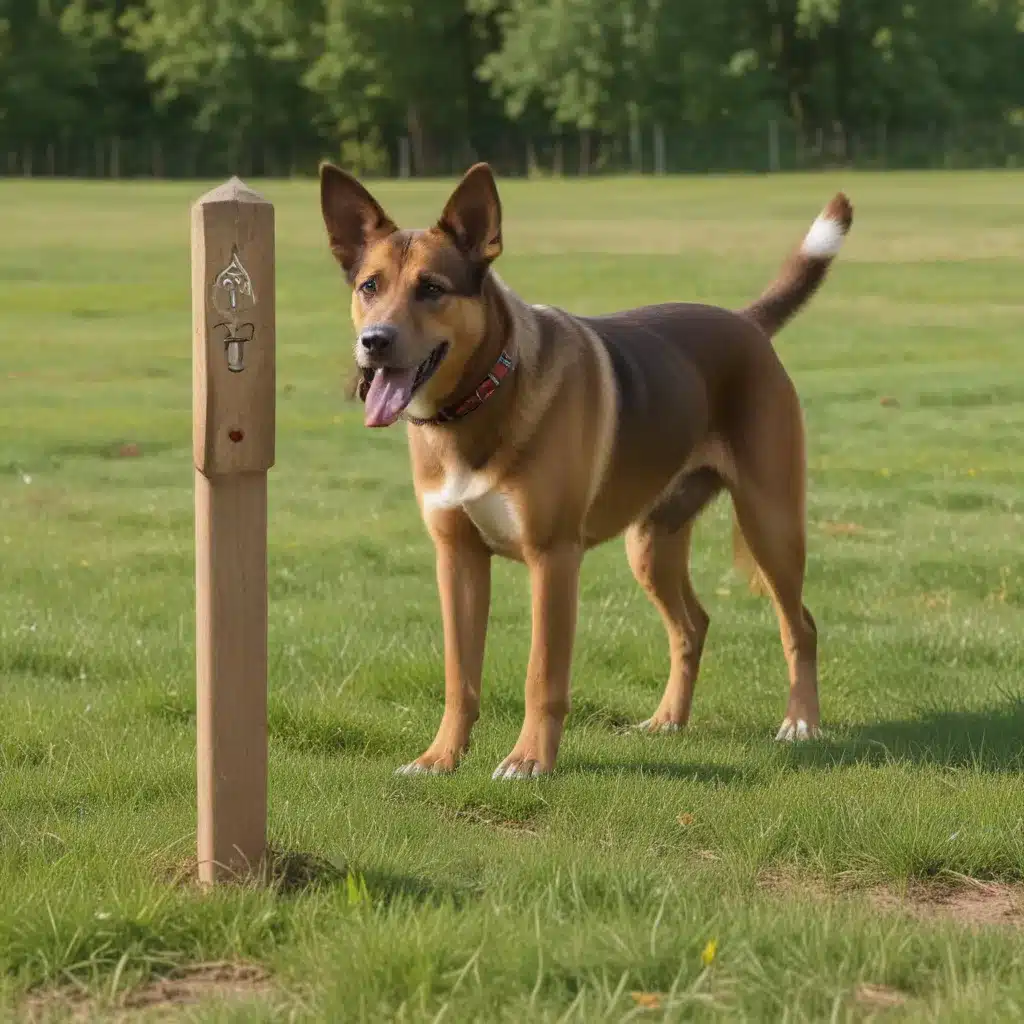
Understanding the “Pee-Mail” Mindset
As a dog owner, I’ve learned that our furry friends have a unique way of communicating with the world – through the power of their urine! That’s right, dogs use their pee as a form of “pee-mail,” leaving scented messages for other canines to interpret. It’s their way of saying, “This is my territory, back off!”
But when this natural behavior starts happening indoors, it can quickly become a frustrating and downright messy situation. I know, I’ve been there. My dog, Buddy, used to mark his territory all over the house, from the corners of the couch to the new throw rug I just bought. It was enough to make me want to tear my hair out!
According to VCA Hospitals, urine marking is a normal dog behavior, but it’s not always socially acceptable when it happens inside our homes. So, what’s a dog parent to do?
Identifying the Triggers
The first step in tackling this territorial behavior is to understand what’s causing it in the first place. As it turns out, there are a few common culprits:
Hormonal Changes
Intact (unneutered) male dogs are the biggest offenders when it comes to indoor urine marking. Their hormones are raging, and they feel the need to stake their claim on every inch of the house. Rover.com explains that unspayed females can also engage in this behavior, especially when they’re in heat and looking to attract potential mates.
New Visitors
Whether it’s a new human or canine friend, the introduction of an unfamiliar face can trigger a dog’s instinct to re-establish their territory. They might start marking around the house to let the newcomer know who’s boss.
Major Life Changes
Big disruptions to a dog’s routine or environment, like a move, a new baby, or even rearranging the furniture, can make them feel insecure and lead to increased marking. They’re trying to regain a sense of control over their space.
Anxiety and Stress
Elanco explains that dogs might also mark out of stress or anxiety, perhaps due to separation anxiety or a past traumatic experience. It’s their way of coping with their fears.
So, if your pup has suddenly started lifting their leg in the house, take a good look at what’s changed in their world recently. Identifying the trigger is key to finding an effective solution.
Strategies for Stopping the Spray
Okay, now that we understand the root causes of indoor marking, let’s talk about how to put an end to the pee parade. Here are some tried-and-true tactics:
Get Them Spayed or Neutered
The Rover.com article mentioned that neutering can reduce marking behavior by up to 80% in male dogs. While it’s not a guaranteed cure, it’s a great place to start. Just be sure to talk to your vet about the best timing for the procedure.
Thoroughly Clean Affected Areas
Dogs are attracted to the smell of their own urine, so it’s crucial to eliminate every trace of it. Elanco recommends using an enzyme-based cleaner to break down the odor, rather than harsh chemicals that could actually encourage more marking.
Restrict Access to Marking Spots
If there are certain areas or objects your dog has a habit of targeting, try to limit their access to those spaces. Use baby gates or crate training to keep them out of the temptation zone.
Provide Positive Reinforcement
When you catch your pup sniffing around and getting ready to mark, quickly redirect their attention with a treat or a toy. This helps them associate those areas with good things instead of territory-marking.
Establish Your Pack Leader Status
Dogs are pack animals, and they have a natural instinct to defer to the alpha. Elanco suggests reinforcing your leadership role by having your dog obey commands before doing everyday activities like feeding or going for a walk.
Consider Medication or Pheromones
In some cases, your vet might recommend medication or synthetic pheromones to help reduce your dog’s anxiety and curb their marking urges. These should be used in conjunction with behavior modification techniques.
The key is to be patient, consistent, and use a combination of these strategies. Changing ingrained behaviors takes time, but with a little effort, you can say goodbye to the indoor pee parade for good.
Maintaining a Fresh Scent
Of course, it’s unrealistic to expect your dog to stop marking entirely when they’re outside. After all, it’s a natural way for them to communicate and claim their territory. But there are still some steps you can take to manage this behavior:
- Keep your dog on a leash when visiting new places or areas with high marking activity. This allows you to quickly redirect their attention before they start spraying.
- Thoroughly clean and rinse any outdoor spots where your dog has marked to remove their scent.
- Use an outdoor odor neutralizer to discourage re-marking in the same areas.
- Praise and reward your pup when they relieve themselves in appropriate, designated spots during walks.
Remember, a little prevention and proactive training can go a long way in keeping your home and yard free from unwanted pee-mail. And who knows, maybe one day Buddy and I will start our own dog-walking business – iHaveDogs.com has a nice ring to it!

